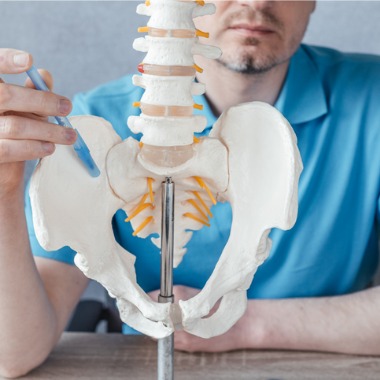Common Causes of Pelvic and Lower Back Pain
Have you ever woken up, stretched out of bed, and felt that familiar twinge in your lower back or pelvis? You’re not alone. Pelvic and lower back pain are like those uninvited guests at a party — showing up when you least expect them and often overstaying their welcome. While there are several culprits behind this discomfort, one often flies under the radar: sacroiliac (SI) joint dysfunction.

The Usual Suspects of Pelvic and Lower Back Pain
Muscle Strain
If you’ve ever lifted something heavy or tried a new exercise, you may experience muscle strain. Muscle strains are the most common cause of lower back pain, often resulting from overuse, poor posture, or sudden movements.
Herniated Discs
When a disc herniates, it can press on nearby nerves, causing pain that radiates down your leg, known as sciatica.
Osteoarthritis
This is your “wear and tear” type of arthritis, where the cartilage that cushions the ends of your bones wears down over time, leading to pain and stiffness.
Pregnancy
The weight and position of the growing baby can strain the back, and hormonal changes can loosen ligaments and joints.
SI Joint Dysfunction: An Often Overlooked Cause of Pelvic and Lower Back Pain
Now, let’s talk about the SI joint. When the SI joint works well, you hardly know it’s there. But when it’s not, it can lead to significant discomfort. SI joint dysfunction occurs when there’s too much or too little movement in the joint, leading to pain in the lower back, buttocks, and even down the legs.
What makes SI joint dysfunction such a sneaky cause of pain? It’s often underdiagnosed. The symptoms can mimic other conditions like sciatica or a herniated disc, leading many down a rabbit hole of treatments for the wrong problem.
Finding Relief
If you suspect your lower back or pelvic pain might be due to SI joint dysfunction, don’t lose hope. The first step is getting a proper diagnosis, which might involve physical exams, imaging, and maybe even a diagnostic injection to pinpoint the pain source.
Once you’ve identified the SI joint as the culprit, treatment options range from physical therapy to strengthen the muscles around the joint to injections for pain relief and, in some cases, minimally invasive procedures like the innovative LinQ SI Joint Stabilization System. This system is designed to provide long-term relief by addressing the root cause of the pain, not just the symptoms.
Find a Provider Near You Skilled in Diagnosing SI Joint Dysfunction
For those suffering from persistent lower back or pelvic pain, consulting with a healthcare provider skilled in diagnosing and treating SI joint dysfunction is a critical step toward recovery. Contact PainTEQ today to find a provider near you.



